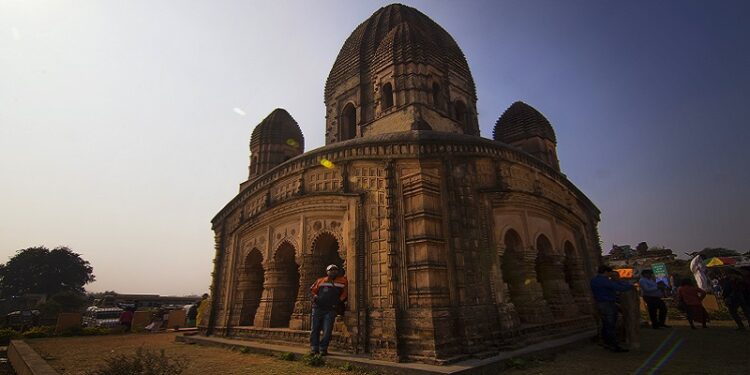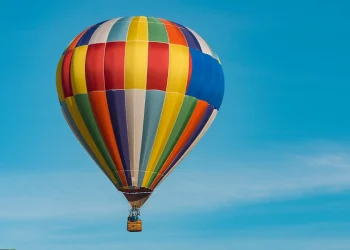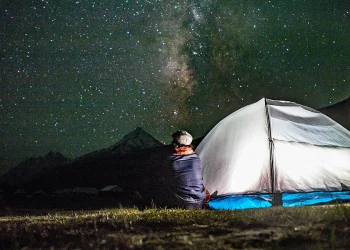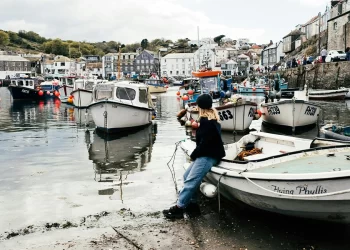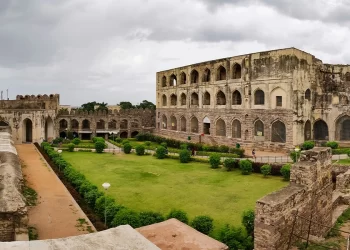Ididn’t chuck the chance of being the pillion rider of Sushovan and took an express train from Howrah. My mind shifted gear from the excitement of travelling in exotic places to the low keyed, much sedate district town of Bengal.
The sun-kissed green fields of the afternoon, passed by. The low undulations at the horizon appeared before the sun went down. When we reached after eleven in the night, the winter chill was pretty nipping. Fog was descending on the sleeping little town.
The bike was ready by next morning and we pushed off. The harvesting season being done, the villagers were all busy in stacking the granaries. The crops were drying all over the village roads. The villagers, mostly the ladies, were busy threshing and winnowing paddy in traditional, manual way.
Time stands still in quaint pictorial villages. The mud-built walls of the huts across which Sushovan was driving his bike, were aesthetically painted with colourful floral patterns. Urchins were scampering around and the elderly men chose to doze on charpoys. The cleanliness of the walls and the yards in front of the huts was so soothing.

Once we drove inside a small alley, just as it was. No milestone flaunted any popular tourist spots to attract anyone there. Even the surprised villagers kept gaping in wonder. It took us nowhere and got us nothing but absolute peace. “Come and see our village”, mumbled one amused villager. But we had to move on because time was so precious and we had planned to cover entire Purulia in two days.
The top draw tourist destination of Purulia is Ayodhya Hills. For anyone having the slightest idea of the district, this is the only name that comes, as if the two are synonymous.
Ayodhya range looks so pretty from a distance with a large foreground of sugarcane fields. The more we were moving through the fields on both sides of the roads, the more the range was opening up to its left.

Ayodhya Hills is not exactly a destination in itself- other tourist spots open up from there. Climbing upwards towards the hilltop was much casual a journey and the hill top is not exactly as exciting as it seems. But the ascend is of low gradient and the jungle around the road has a charm of its own.
Sun filtering through tall trees, occasional sights of villagers squatting at the roadside, playing cards or doing nothing, village maidens carrying faggots tied in bunches on their heads and walking and talking together in a slow rhythmic pace.
Everything was in sync with the mellow and the restful mood of our journey. Winter sun seemed to have wrapped everything in that stasis.
Ayodhya Hilltop is a small place where picnickers assemble and a few hoteliers have set up some accommodations including a few government hotels. This part of Bengal is mainly a place of dams.
In a circumference of some sixty or seventy kilometres, one can come across similar looking dams set up around rivers like Damodar, Kansabati, Silabati and others. Tourism has developed around the main dams of the town.

The charm lies in the beautiful background of hills or hillocks in front of which the water bodies look like cradled babies. One such smaller, yet quite a beautiful place, where we took a breather, was a rainwater lake known as ‘Blue Water Lake’.

Queer shapes of yellow marble stones jutting out of the cliff echo the human voices thrown at them. The waterfalls that come in the way are mainly places meant for photo shoots. Bamni waterfall or a smaller Turga waterfall are like those unkempt and casual beauties that allure you to get down beside them, take a look with a smile and then silently pass away leaving them in their free willed ventures.
Keeping Ayodhya to our left, Sushovon drove the bike to take a detour down the hill and started wheeling towards Bagmundi hill. It was quite a distance to reach our next destination Khairberia, dam. This is in the lap of Bagmundi hills, an hour ride from Ayodhya.
But Bagmundi hills are bigger in shape and seem to be remote, as barring tribal villages hardly any habitation is there. The lone resort beside the dam is set up at a great vantage point but is meant for luxurious revellers. The wanderers would pass a day here, stroll around the quietness, climb up the hill till their limbs ache, watch the golden glow around and when dusk falls, they move on.

We were rushing as sun was inclining towards the hills faster and we wanted to see the last trails of the day from Muruguma dam which was quite a distance away. Sushovon took a short cut as advised by a wood collecting tribal lady and I insisted to overlook the Google map because the other road looked so inviting.
It was dusty, narrow, vacant but the gradual incline towards the higher slopes of the hills that lay open for a big distance in front of my eyes was, so enticing.
The jungle around us was getting thicker as we were moving inside the hill. The condition of the road got worse. Absolute silence and loneliness of the place was making it eerie. The thrill was immense but the stooping branches around the narrow road was making it look darker.
Sometimes an attempt of an adventure has its seamy side too. We didn’t risk to move any further and submitted ourselves to Google maps meekly. Sunset at Muruguma had to be left out for another day.

Sunset views in Purulia are picturesque. The dams and the hillocks form an ideal landscape for the shutterbugs to wait for the time.
When we came back to the lower dam of Ayodhya hills, the golden hour just evaded my lens. The picnickers there were busy wrapping up their day long revelry. Without taking a pause we drove up towards the Upper Dam. The spiralled road and sharp hairpin bends could be much younger siblings to my more familiar high-altitude twists and turns.
But driving over those low-keyed hillocks has a charm of its own. The ride from lower to upper dam was quite pleasant because of the vast openness and clear unguarded sky and with every turn the sun receded further across the horizon, keeping faded tints of crimson. The open sky still had that refracted glow which always holds a spell for the prisoners of urban life.
Evening fell when we reached the huge upper dam. We left our hotel a little early the next day. We would cover the other part of the town and also realise yesterday’s unfulfilled wish of watching sunset at Muruguma. Covering two different parts of Purulia is not practical unless you have such an able biker as Sushovon.

Our destination was Garpanchkot, one of the chief attractions of Purlia after Ayodhya Hills and Baranti. Baranti is like another quiet and petite lass who plays with herself exuding a nubile charm for those who love to watch her from a distance. She doesn’t promise anything sumptuous but offers a reassuring gentle smile that lingers for sometime and thereafter.
Surrounded by Panchkot hills, Baranti attracts anyone with the beautiful Muradi dam. In the spring time the air is filled with the pollens of scarlet Palash flowers. The twittering of the birds from the beds of the buds and the inflamed redness of the boughs mark the season of love and a celebration of colours.
Sunset on the lake of Baranti gets etched in anyone’s memory. A few stray village-boys set afloat in their canoes with indigenous net to catch fishes. Reclining at the stony slopes beside the lake one watches how the sun’s rays ooze out of the golden horizon and the lake water and the red soil is smeared with them.
The night sky above the lake can be a visual feast of stargazers. I had been to Baranti once and loved everything in it. A separate Purulia trip can centre around this lake land.
Garpanchkot is a hilly hamlet that boasts of a temple and ruins of the by-gone era of Bengal. Some rhymes born anonymous are handed down from the earlier generation to become a part of the folklore. One of them records the invasion of the Maratha miscreants (bargi) who unleashed terror on rural Bengal, coming as tyrants on horseback for continual plundering.

Garpanchkot retains the relics of the attack of those Maratha miscreants. The broken brick walls and the roots of an antiquated tree that engulfs the remains of a fort are filled with stories. The huge range of Panchet wrapped with the lush green trees offer an idyllic backdrop to these ruins, the temples and the broken walls of the fort.
River Damodar flows at the other end of the Panchet hill and just a few kilometres away the river water is reserved in a gigantic Panchet dam. The road towards Panchet dam is through thick forests of Sal, Palash, Simul trees. The huge Panchet hill stands at the right and the verdurous slopes towards it invariably tickles one’s exploratory Instinct.
A night stay in just a handful of very well-located resorts do offer the visitor the scopes of jungle walk. But looking at the lush green vastness, I knew I wanted to come back here during monsoon.

The smell of rain-soaked , the dark overhanging clouds over the dam and the resplendent greenness would be something to cherish and savour.
The quietude of the desertion with just a handful of villagers rarely coming across the way was so benumbing. We reached the Panchet Dam, the last spot of this part of the district around three in the afternoon.
Panchet is perhaps the largest of all dams in the surrounding area. It is the only place where we saw boating in the dam where a huge number of picnickers were enjoying amid yells of merrymaking.
We didn’t stay for long because the tour would be incomplete without the sunset in Muruguma and it would be nearly two-hours’ drive from there.

Another charm that lies in the fleeting vignettes of the highway is the village market that sits on the stubble or fields. Announcements of yatra pala (rural folk opera) would fly in.
Apart from the winter vegetables and normal everyday essentials I felt quite amused to see the cock fights happening in the fields. The excitement and enthusiasm of local people around the activities of local makeshift marketplace, popularly known as ‘hut’ was alarming. It left almost the entire crossing of the roads blocked with their cattle which were also brought as a part of selling and buying wares.
Driving through the melee of legs of that buzzing crowd, returning cowherd, wood-carrying ladies beside the courtyard of a local community centre where seasonal ‘yatras’ are held as prime entertainment of the local people, was a challenge for Sushovon.

We lost all hopes of watching the most cherished view of the sun going down behind the with its reflection on Muruguma lake. When we finally reached the banks of the beautiful Muruguma dam, it indeed went down leaving streaks of purple haze in the sky.
The placid waters with Ayodhya Hills at the backdrop form a spectacle of calmness and serenity. The story of sunsets in that remote locale of the district unfortunately remained unread for the time.

Witnessing the traditional Chow dance, with the tribals wearing colourful masks of different gods and mythological characters depicting the legends of the myths, also remained another unfulfilled desire. But wishes that remained unfulfilled this time were charmingly recompensed by the warm hospitality of the rural folks who shared concern for our safe return to the guest house after a challenging motorcycle ride through the pitch darkness in the chilling December cold.
They poured on our paper dishes an extra serve of the pakoras once we relished and appreciated their taste. The rest of it had to be kept in reserve for the next monsoon. Just to savour the hospitality of these unknown tribesmen and listen to their tales, a desire of revisiting the place may be, in next monsoon season started coming to my mind as the evening train pushed off for our city.

TRAVEL INFO
How to Reach:
By Air: Netaji Subhas Chandra Bose International Airport, Kolkata is the nearest airport. One can take a cab or bus or train from Kolkata to reach Purulia.
By Train: The district of Purulia has its own railway station. There are direct trains that connect Purulia to all the other regions in India, including Delhi, Orissa, and Kolkata.
By Road: Purulia is well connected to the other districts and regions in West Bengal through roadways.
Ashis Ghatak is a teacher by profession in a senior secondary school of Kolkata. He loves to travel on the high mountains and catch moments with his camera. A playlist of old country songs and musings with his own self are the only companions on his journeys to the hills.


